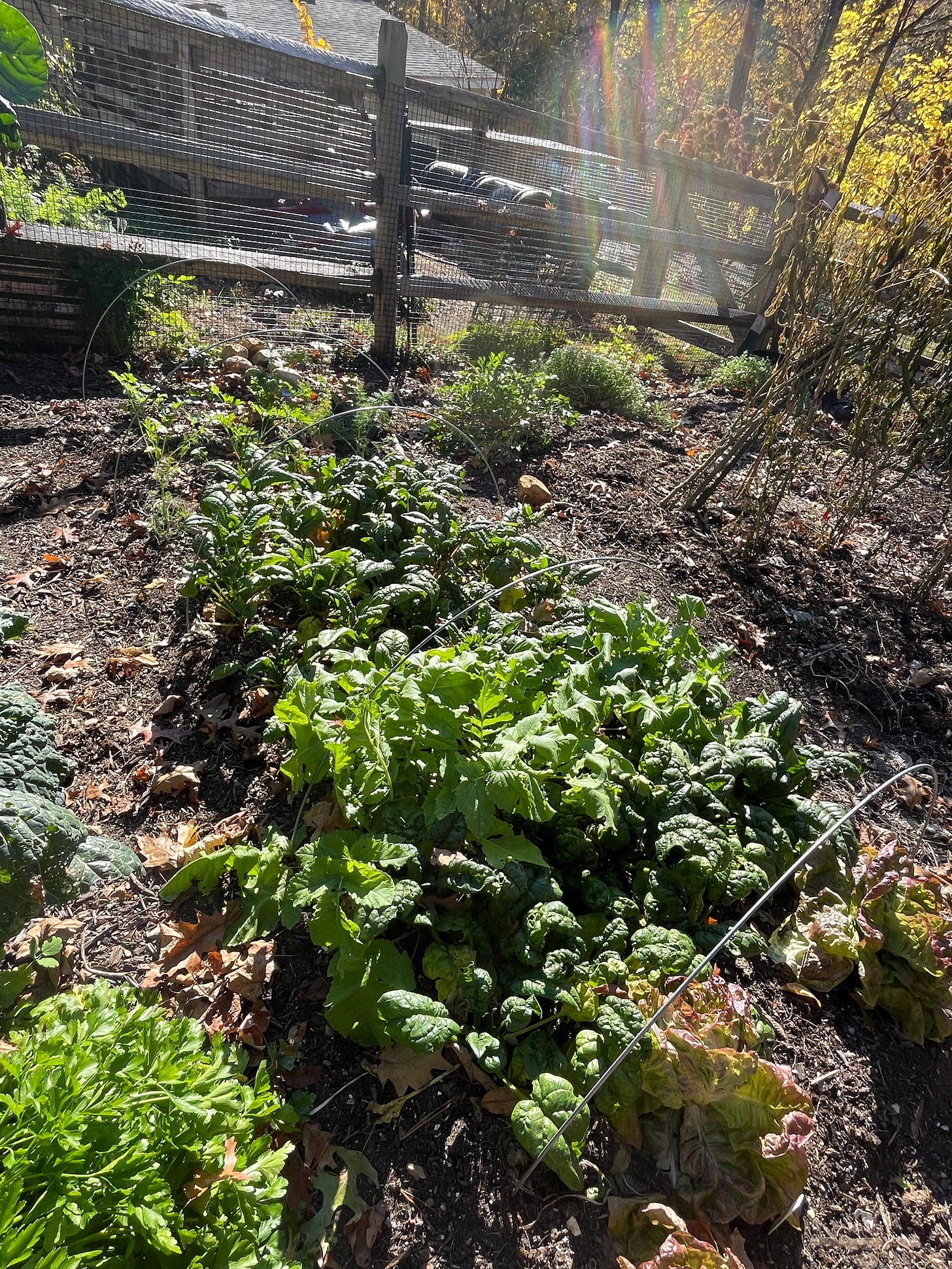First frost signals doom for some plants, but not for all
While many vegetables succumb to an overnight freeze, others continue to thrive
I was thinking the other day about the word hoar-frost, which I haven’t heard spoken for a long, long time, if ever. I was wondering where it came from. The Old English Dictionary, which hyphenates the word, says it dates to at least the 1200s and stems from the Germanic word hoar, or greyish-white. It was most often used to describe the color of an aging person’s hair but, when it came to the natural world, also applied to that thin white coating of frozen moisture seen on surfaces in cold weather, usually early in the day.
It’s still a useful word today, 750 or so years on, since that’s exactly what could be seen on the leaves of plants in our vegetable garden on a few recent mornings when the temperature had dipped into the high 20s overnight. It occurs when the air is moist and the temperature drops below 32 degrees. The water vapor freezes instead of forming a dew, creating crystals of ice on unheated outdoor surfaces.
What we were experiencing, in horticultural terms, was the anticipated first frost, the meteorological lodestar used by gardeners everywhere to mark the end of the growing season and the beginning of the long, dark months of dormancy.
Except it doesn’t, at least not entirely. In western Massachusetts, the first frost usually occurs by mid October and this year it was right on schedule. And while it certainly meant curtains for most of our annual flowers and a few vegetables in the garden, many plants survived the frosty nights just fine. In fact, some vegetables are known to actually improve with flavor after enduring a night of sub-freezing temperatures, which seem to trigger the plants to produce more sugars as a means of self-protection.
A visit to the vegetable garden this week revealed these contrasts.
The marigolds and nasturtiums that had been tucked into small, open spaces in the beds during the summer and which had subsequently grown to truly eye-popping scale were suddenly and irreversibly withered. The petals, bright shades or orange, yellow and red 24 hours earlier, were darkened, the branches limp. The pole bean vines stretching across the arbor in the center of the garden had turned a sudden brown, the bean pod shells dead but still swollen with hard beans inside, most of them shades of white or muted pink. The beans are ready for collecting into envelopes or jars and saved to be planted themselves in the years to come.
The two Joe’s Long Cayenne pepper plants, the sole survivors in a bed that at the height of the summer included Shishito and Jimmy Nardello peppers as well as two varieties of eggplants, had finally succumbed to the season as well. The plants were lifeless, the two-dozen or so thin, 10-inch long peppers hanging from the branches looked abandoned and homeless. The peppers, which start out green and are harvested for drying when they turn a bright red, were instead left in varying shades in between. I removed those closer to the red end of the spectrum and will suspend them in the basement alongside others harvested in recent weeks, to be ground up when fully dry. They’ll produce some of the best tasting red pepper flakes I know.
Meanwhile, many other plants seemed in mid-summer form. Daytime temperatures have been in the high 60s and low 70s and the skies have been filled with sunshine. It’s truly been a classic second summer, the only drawback being a marked lack of rainfall.
The spinach plants, which I put into the ground as tiny seedlings back in August, were bursting with gorgeous, savoyed deep green leaves. The heads of four savoy cabbages were perfectly round and swelling, the fronds of a half-dozen fennel plants deep green and intoxicatingly fragrant. The same goes for the kale, arugula, carrots and radishes. And the Brussels Sprouts, of course.
The biggest and most pleasant surprise was the three varieties of lettuce I had planted in late August with hopes that we’d still be eating salads picked from the garden come fall. They continue to thrive and while I know they will succumb to the inevitable if we get a prolonged and harder freeze, we’re still enjoying them in the third week of October.
I may cover some of the beds in the next week or two by stretching insulating garden fleece or fabric across the wire hoops that span four of the beds. It would prolong the growing season for some of the brassicas – the kale and cabbage in particular – into December, at which point I’d let nature take its course and let the deep freeze set in.
Though I could also try to keep things going by stretching thin clear 4mm plastic over the beds to create a mini-greenhouse, I’m thinking I probably won’t this year. That way, I’ll get to anticipate and mark the twin sibling of first frost, the spring’s yin to autumn’s yang, which is last frost. Around here that comes in mid-May.







